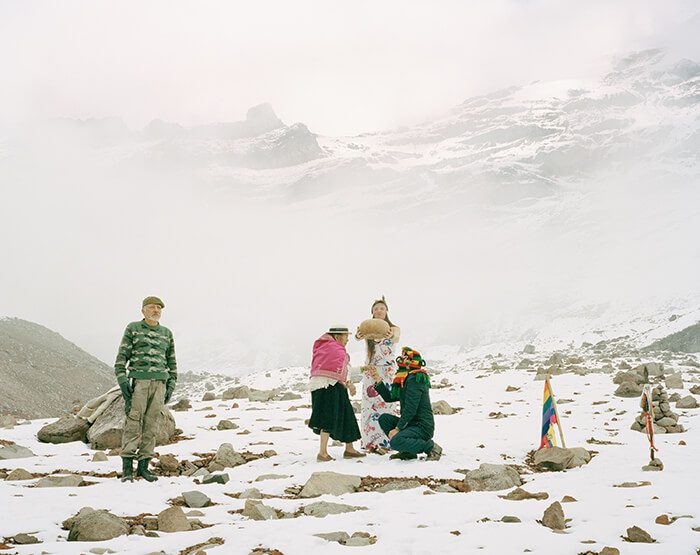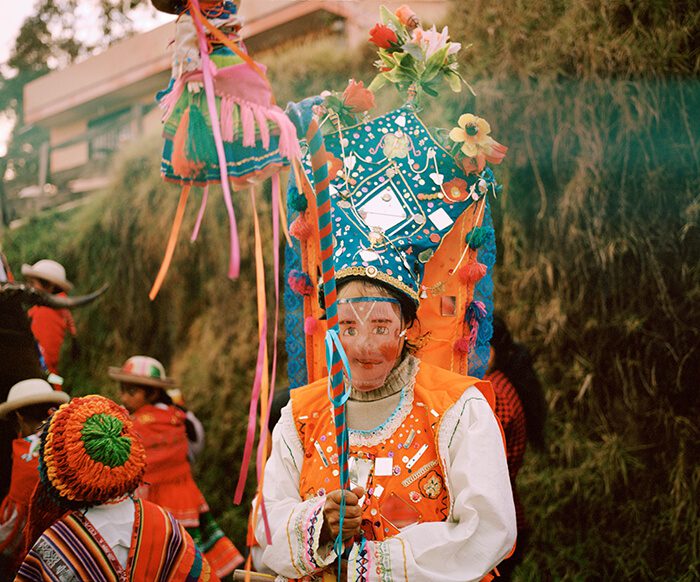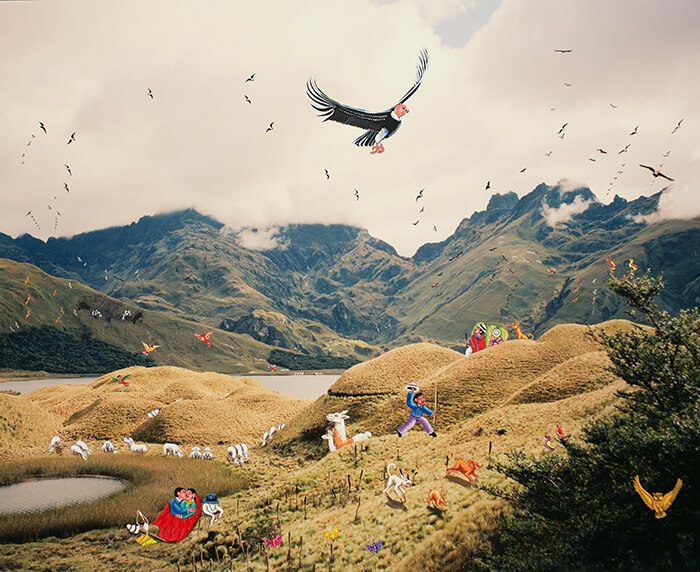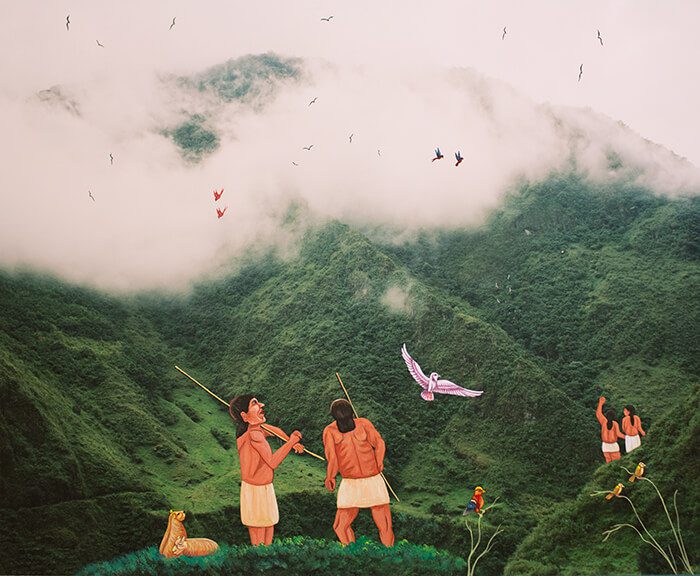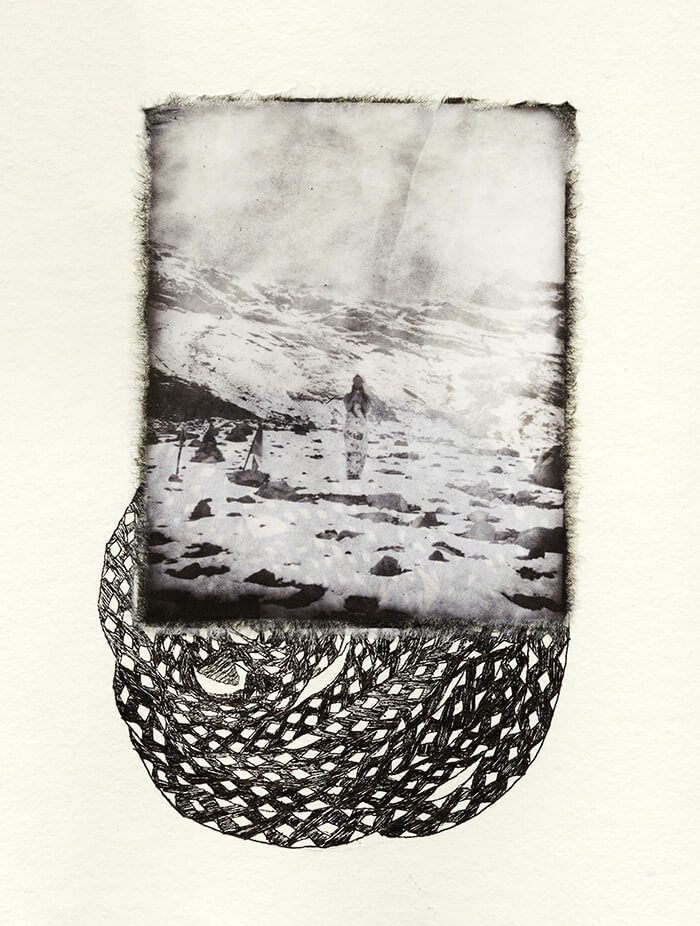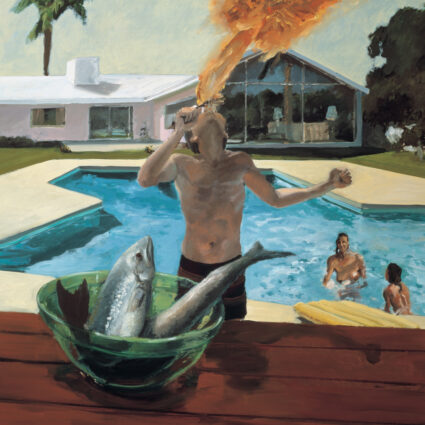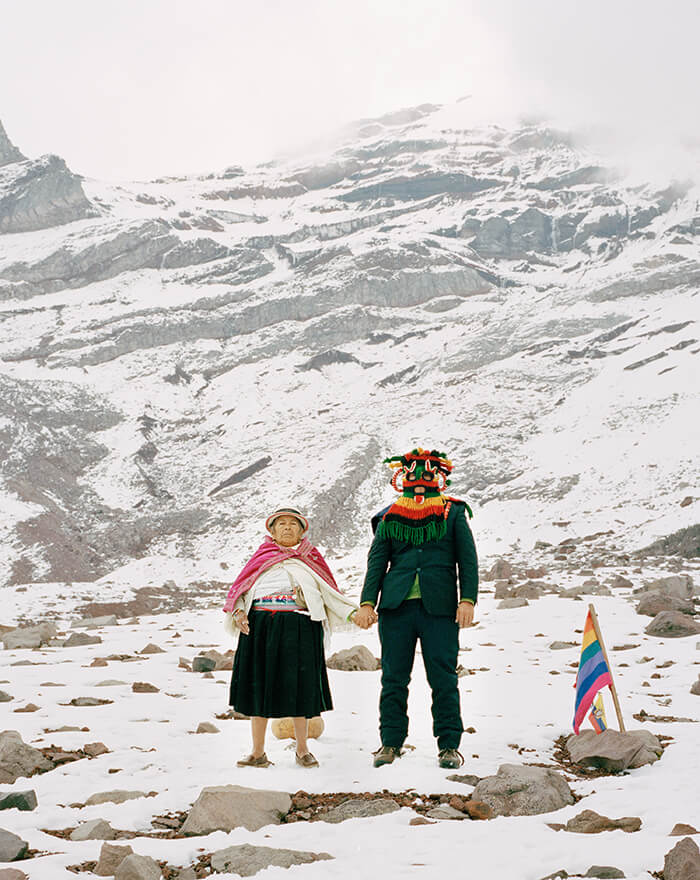
In the Mouth of the Mountain Jaguar is like a weaving; it goes in and out and back and forth between fact and fiction.
—Karen Miranda Rivadeneira
Karen Miranda Rivadeneira, a Santa Fe-based artist by way of Ecuador and New York began laying the groundwork for her project, In the Mouth of the Mountain Jaguar Everybody is a Dancing Hummingbird, nearly eleven years ago when she first visited a small region of the Andean mountains in Ecuador. She visited regularly, building relationships with the people there. Her friendships grew and evolved, and by the time she received a grant from Musée du quai Branly in Paris to complete the project, she felt that it was not only hers to complete, but a story that must be told with the help of her friends and her collaborators.
Miranda’s practice as a photographer and artist is steeped in the tradition of storytelling, furnished by years as a photojournalist. The mix of traditional black-and-white, color, and illustrative images straddle the worlds of photo-documentary and the surreal, creating a visual space that is fantastic yet rooted in reality. The black-and-white images use a passive, voyeuristic eye, while the color images are a mix of staged and candid scenes. The combination of styles sets the cadence for experiencing the work, which is slow, meandering, and develops over time.
The Marriage of the Uma and the Yachaj is one of the more heavily staged images in the series and is a collaboration between Miranda and Mama Matilde, the village medicine woman who desired to marry the spirit of her calling, the medicine man. Miranda helped to arrange the ceremony and to realize the vision of Mama Matilde. This collaboration and the resulting image are an example of the many voices represented in the project, as well as the intermeshed quality of fact and fiction. Other examples of collaboration are the illustrated photographs, created with the painter Julio Toaquiza. These works are perhaps the most fantastical, with the insertion of mythical motifs into the imagery. They create a pause for those who think they are looking at a photo-documentary project and call into question what is real and imagined.
The project is not easily digested in the Western way of looking; it takes time, patience, and a suspension of disbelief on the viewer’s part. Miranda asks us to step into a different world and forget the rules of where we came from.
To see more of Karen Miranda’s work, please visit her website, karenmiranda.com.
